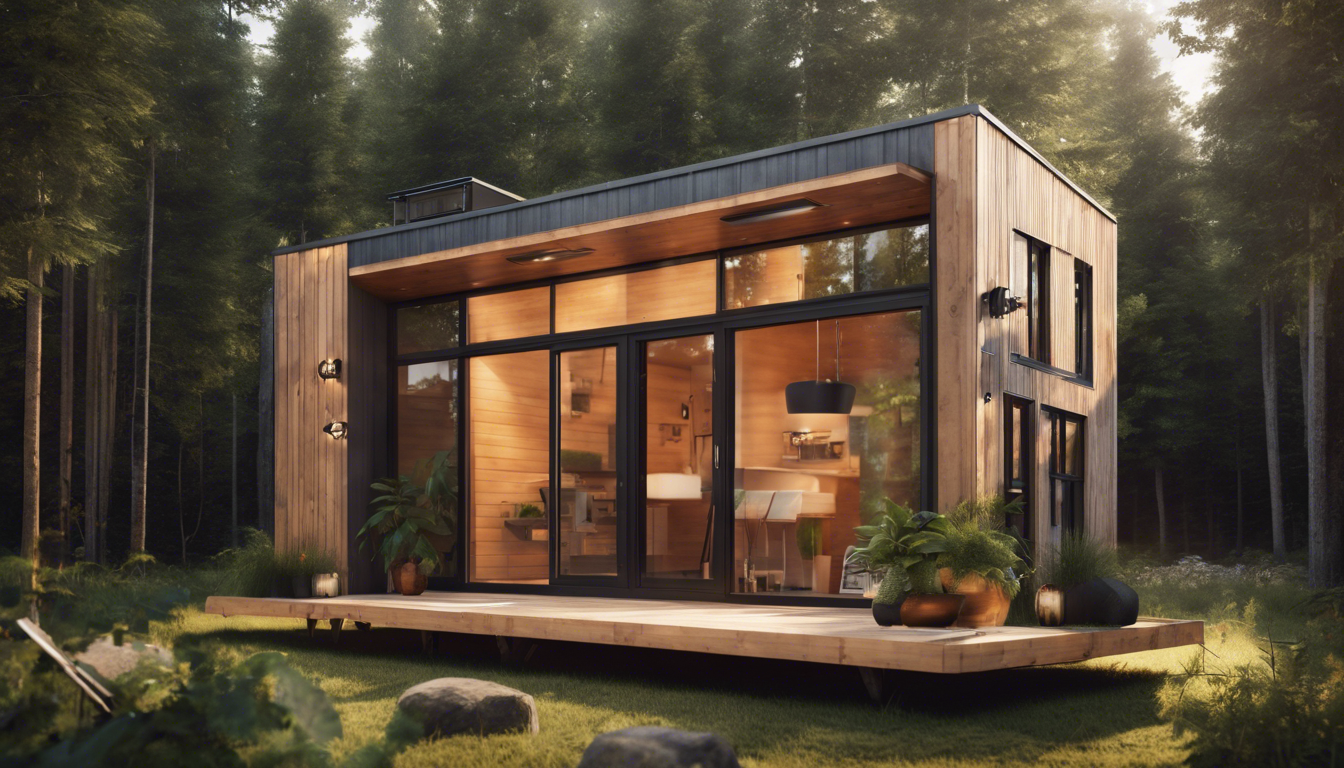Tiny homes on foundations are gaining popularity as a smart living solution for many people seeking simplicity and functionality.
These compact living spaces offer a stylish alternative to traditional housing, allowing individuals to downsize while still enjoying the comforts of home.
In this article, we will explore the benefits of tiny homes on foundations, highlighting how they can lead to a more sustainable lifestyle and provide unique design opportunities.
We will also discuss the challenges and considerations to keep in mind when choosing to live in a tiny home.
Sustainability and Environmental Impact
Tiny homes on foundations offer a sustainable living option that significantly reduces environmental impact.
These homes use fewer materials for construction compared to traditional houses, minimizing resource consumption.
They also require less energy for heating and cooling due to their smaller size, which can lead to lower utility bills and reduced carbon footprints.
Furthermore, many tiny homes incorporate eco-friendly features such as solar panels, rainwater harvesting systems, and composting toilets.
By choosing tiny homes on foundations, individuals can embrace a more sustainable lifestyle while contributing to a healthier planet.
Design and Customization Options
Designing tiny homes on foundations offers various options for customization, allowing homeowners to create spaces that reflect their personal needs and tastes.
Owners can choose different layouts, such as open-concept designs or distinct rooms, depending on their lifestyle.
Interior finishes like flooring, cabinetry, and fixtures can also be tailored to individual preferences.
Exteriors can vary from traditional to modern styles, giving a unique aesthetic appeal.
Sustainable materials and energy-efficient appliances are popular choices that enhance practicality and comfort.
With these design and customization options, tiny homes on foundations can provide both function and style.
Challenges and Considerations for Tiny Home Owners
Tiny homes on foundations present unique challenges and considerations for owners.
First, zoning laws can restrict where these homes may be built.
Many areas have specific regulations that differentiate between traditional homes and tiny homes.
Before committing, owners must research local building codes and find suitable locations.
Second, financing options can be limited.
Many lenders are hesitant to finance tiny homes due to their smaller size and perceived resale value.
Homeowners may need to seek alternative financing methods or save more upfront.
Additionally, maintenance can require different strategies.
Although tiny homes have fewer square feet to care for, they can still present issues related to plumbing or electrical systems.
Simple design choices can help minimize these problems.
Overall, understanding these challenges is crucial for a successful tiny home experience.
Frequently Asked Questions
What are tiny homes on foundations?
Tiny homes on foundations are small, compact living spaces that are permanently anchored to a foundation.
Unlike tiny homes on wheels, these structures are built to comply with local building codes and provide a stable, long-term housing solution.
What are some benefits of living in a tiny home on a foundation?
Key benefits include lower living costs, reduced maintenance, minimalistic living, and the opportunity to downsize.
Tiny homes also encourage sustainable living practices and foster a more intentional lifestyle.
How do tiny homes contribute to sustainability?
Tiny homes typically require fewer materials to build and maintain, resulting in a lower environmental footprint.
Their smaller size encourages eco-friendly practices, such as energy conservation and reduced waste.
Can tiny homes on foundations be customized?
Absolutely!
Tiny homes can be fully customized in terms of layout, design, and interior features.
Homeowners can tailor their space to meet their personal needs and aesthetic preferences.
What challenges might I face if I decide to live in a tiny home on a foundation?
Challenges include zoning laws and building codes, limited space, potential financing issues, and the need for a lifestyle adjustment.
It’s important to research local regulations and plan for how you’ll utilize the small space effectively.




Leave a Reply